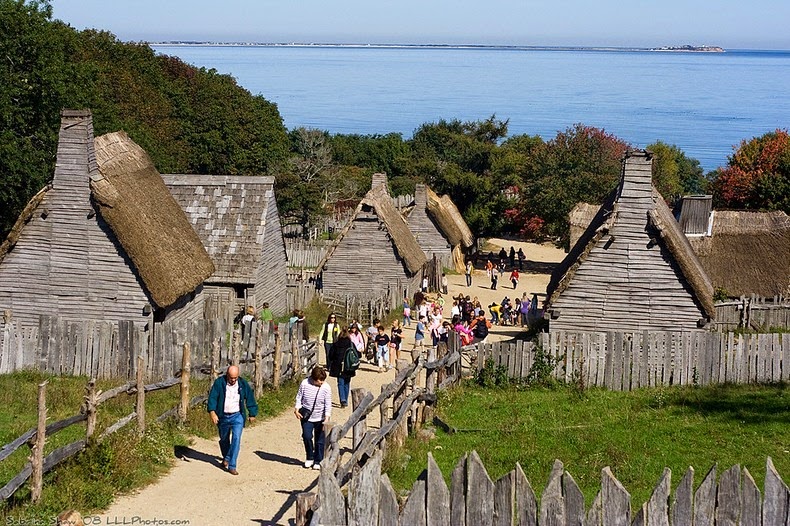In the early 17th century a group of separatists, who came to be known as the Pilgrim Fathers, fled the volatile political environment in England and came to North America in order to seek religious separation from the Church of England. They settled at a place, which today is the modern town of Plymouth, in Massachusetts, United States. The colony, established in 1620, is one of earliest successful colonies to be founded by the English and the oldest continuously inhabited English settlement in what was to become the United States of America. Today, Plymouth holds a special role in American history, and many of the people and events surrounding Plymouth Colony have become part of American folklore, including the North American tradition of Thanksgiving. The original settlement of Plymouth Colony is recreated in a faux village called Plimoth Plantation, where actors reenact events and the day-to-day life of the 17th century English colonists.
Plimoth Plantation, located 2.5 miles south of the original 17th century English village, brings colonial Plymouth vividly to life. Here, you will find modest timber-framed houses furnished with reproductions of the types of objects that the Pilgrims owned, aromatic kitchen gardens, animals pens, storehouses, fields and fortification. Role-playing townsfolk in costumes portray actual residents of Plymouth Colony, who are eager to give visitors a piece of history. They have adopted the names, viewpoints and life histories of the people who lived and worked in the Colony in 1627, and each has a unique story to tell. You can ask them about their religious beliefs, education and child rearing, gardens, cooking, or any topic of interest to you. It’s like travelling back in time and conversing directly with the Pilgrims.
The 1627 English Village loosely follows a time line, chronologically representing the calendar year 1627 from late March through November - the months the museum is open, depicting day-to-day life and seasonal activities as well as featuring some key historical events such as funerals and special celebrations.

Alongside the settlement is a re-creation of a Wampanoag home site, where modern Native People from a variety of nations explain and demonstrate how the Wampanoag's ancestors lived and interacted with the settlers. Near the purported Plymouth Rock, is docked a full-scale replica of Mayflower, the ship that brought the early colonist to Plymouth. The details of the ship, from the solid oak timbers and tarred hemp rigging to the wood and horn lanterns and hand-colored maps, have been carefully re-created to give you a sense of what the original 17th-century vessel was like. On board you can explore the cramped quarters of the ship's passengers, the spacious master’s cabin, and peer down into the lower level "hold," where the food, clothing, furniture, tools and other items necessary to start a colony were stored. Speak with the sailors to learn about the perils of maritime travel and the tools of 17th-century navigation.
The museum grounds at Plimoth Plantation also include Nye Barn, where historical breeds of livestock are kept; a crafts center where many of the objects used in the village exhibits are created; a cinema where educational videos are shown, a Colonial Education site for youth and adult groups, and visitors' center with indoor exhibits and educational programs.
Mayflower II, the full scale replica of the original 17-century ship Mayflower. Photo credit
Sources: Wikipedia / Plimoth.org





























Comments
Post a Comment